Apple Inc. showcased its latest iPhones -- the iPhone 8, iPhone 8 Plus and iPhone X -- on Tuesday in a much-hyped product unveiling held for the first time at the Steve Jobs Theater at its Cupertino, Calif., campus.
An update of the company’s signature gadget, now in its 10th year, was the most anticipated part of the keynote address, and it could have big ramifications for the smartphone industry as a whole.
There was news about the Apple Watch and the Apple TV too.
- Share via
With iPhone 8 and iPhone X, Apple creates another tier of luxury

Do you want the newest iPhone, or the best iPhone?
Those two things are typically one and the same, with Apple’s latest phone being sleeker, shinier and more powerful than those that came before it. But with the announcement of the iPhone 8 and the iPhone X on Tuesday, Apple has created a tiered system: two phones, equally new, one of which is undoubtedly more powerful than earlier models, and another even more powerful than that.
It’s a strategy that may confuse some customers, but one that makes sense for a company reliant on its flagship gadget to generate revenue, analysts and business experts said.
- Share via
How the iPhone X’s facial recognition technology works
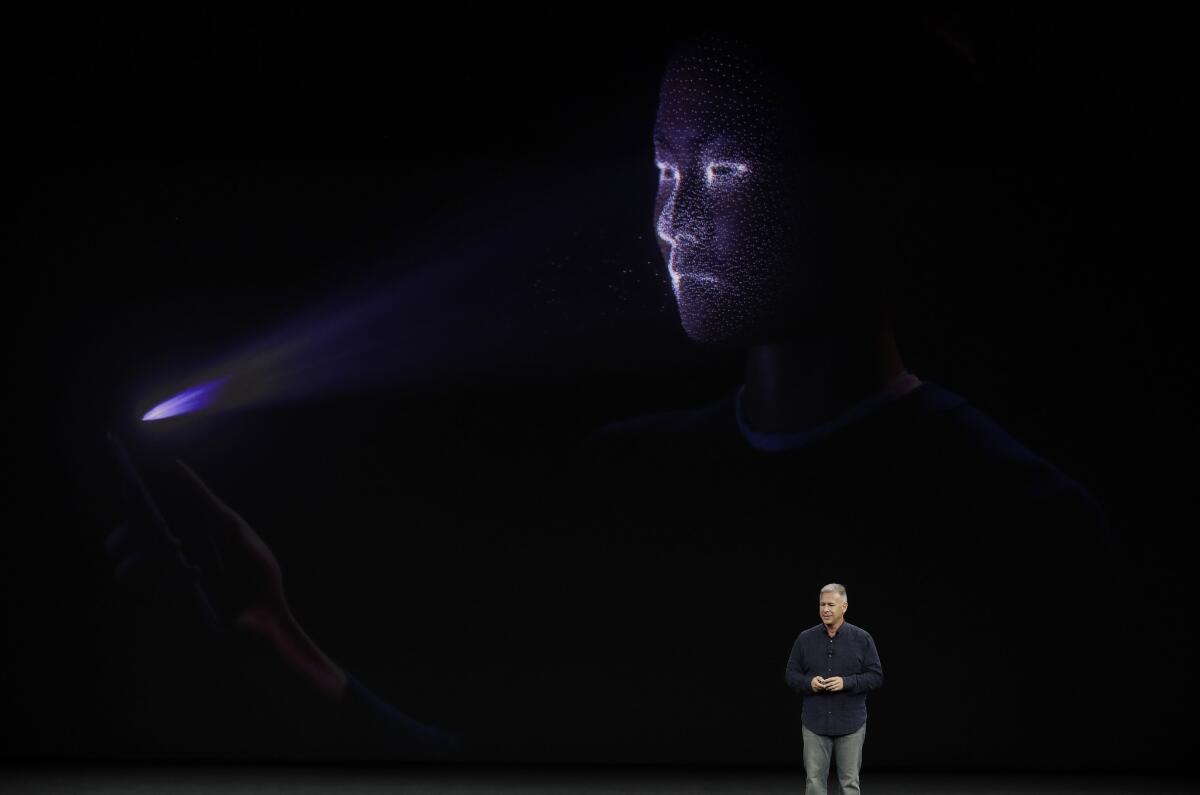
Apple users who were squeamish about handing over their fingerprints now face an even more personal proposition: unlocking their smartphones with their faces.
With Face ID, which Apple announced Tuesday, an iPhone X user simply holds up the device and it recognizes his or her face.
“Nothing has ever been simpler, more natural and effortless,” said Phil Schiller, Apple’s senior vice president of worldwide marketing. “Face ID is the future of how we unlock our smartphones and protect our sensitive information.”
Convenient, but perhaps a bit creepy? Here’s how it works.
The system relies on an advanced suite of tech packed into the front of the new phone. It involves an infrared camera, flood illuminator, front camera, dot projector, proximity sensor and ambient light sensor.
The dot projector beams out more than 30,000 invisible infrared dots, and the infrared camera captures an image.
Apple uses the infrared image and dot pattern and pushes them through neural networks to create a mathematical model of your face, and then it checks that mathematical model against a stored image captured earlier. Once it detects a match, the phone unlocks.
Schiller said Apple took more than a billion images and multiple neural networks to create Face ID. iPhone X will come with an A11 bionic neural engine to process faces.
To set it up, hold your iPhone X in front of your face and move your head slowly around. That will become the stored version on your phone.
Face ID is sophisticated enough to work in the dark, and to learn your face under different circumstances -- so go ahead and wear those funky glasses or grow that hipster beard.
Schiller said Apple also worked hard to ensure the technology “can’t be easily spoofed by things like photographs.”
“They’ve even gone and worked with professional mask makers and makeup artists in Hollywood to protect against these attempts to beat Face ID,” he said.
The tech also requires user attention to unlock -- your eyes have to be open, and you can’t be looking away (meaning your device should remain safe even if you’re asleep).
How secure is it?
With Touch ID, Apple’s fingerprint technology, the chance that a random person could unlike your phone with his or her fingerprint is one in 50,000, Apple said. With Face ID, Apple says it’s one in 1 million.
And identical twins and those averse to using their faces: You can still unlock your phone with an old-fashioned passcode.
Face ID will work with Apple Pay and third-party apps.
- Share via
Santa Monica shoppers don’t appear thrilled about a $999 iPhone
Local university student Lyra Xu had been hearing rumors for months that the latest “would be the most expensive iPhone in history, so I wasn’t shocked.”
Her fears were confimed Tuesday morning at the Apple Store at the Third Street Promenade in Santa Monica. She plans on sticking with her current iPhone, unable to justify spending more on a phone than she has for a laptop.
“I think $1,000 is just too much for a cell phone,” she said.
Reggie Williams, a 32 year old computer programmer and Los Angeles resident was less reluctant -- but only if he buying it allows him to justify getting rid of some other electronics.
“If I can own it and feel I don’t need my laptop or a tablet, I would be willing to consider it. Still that’s a lot of money.”
Maria Mason, a 19 year old Santa Monica College student, was just annoyed at the news.
“It’s ridiculous,” she said. “It’s too expensive, way too expensive.”
There were, however, others willing to shell out for an iPhone X.
“One of these days I’ll get over needing to have the new toy right away,” said Ryan Bennett, an associate at a Los Angeles law firm. “Not there yet.”
- Share via
Better Snapchat masks with iOS 11 and the debut of ‘animoji’
Venice-based Snapchat got a special shout-out during Apple’s iPhone reveal.
While showing off the new features of iOS 11, Craig Federighi, Apple’s senior vice president of software engineering, used Snapchat to demonstrate the app’s improved face mapping.
Donning a virtual mask with golden roses across the forehead, Federighi marveled at the mask’s metallic effect and its ability to seamlessly sync with his face as he moved.
Apple also announced animoji, which are animated versions of emojis. Animoji are created using a user’s facial expressions and voice.
- Share via
The price of the $999 iPhone X is unprecedented, Apple’s history shows
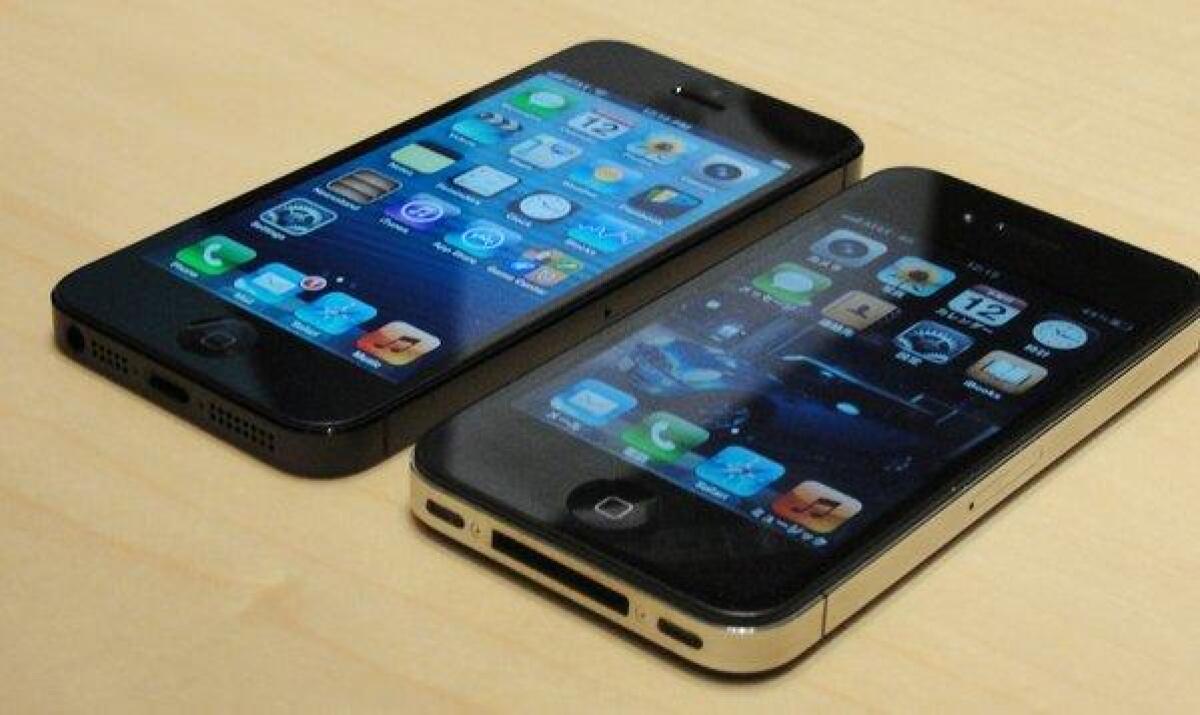
With the iPhone X -- Apple’s new premiere gadget -- starting at $999, the Cupertino, Calif., technology giant has broken new ground when it comes to pricing.
Even for Apple, which isn’t known for its low prices, the jump to $1,000 phones is a major shift. It’s a jump of $200 from its next most expensive starting price.
Below is a chronological list of iPhone prices throughout the years (all prices are for the most basic model at launch, without a cellphone carrier contract).
- iPhone 3G (2008) - $499
- iPhone 3GS (2009) - $499
- iPhone 4 (2010) - $549
- iPhone 4S (2011) - $649
- iPhone 5 (2012) - $649
- iPhone 5C (2013) - $549
- iPhone 5S (2013) - $649
- iPhone 6 (2014) - $649
- iPhone 6 Plus (2014) - $749
- iPhone 6S (2015) - $649
- iPhone 6S Plus (2015) - $749
- iPhone SE (2016) - $399
- iPhone 7 (2016) - $649
- iPhone 7 Plus (2016) - $769
- iPhone 8 (2017) - $699
- iPhone 8 Plus (2017) - $799
- iPhone X (2017) - $999
(Source: Apple History / Apple)
- Share via
Meet the iPhone X, Apple’s newest top-of-the-line gadget

First off, it’s pronounced “iPhone 10.” Now that that’s out of the way, here are the specs for Apple’s new top-of-the-line device.
The body
- Edge-to-edge display
- Glass on front and back (same as iPhone 8)
- Water and dust resistant
- Comes in space gray and silver finishes
- Super retina display (5.8-inch screen, 458 pixels per inch)
- OLED display
No more home button
Raise the phone or tap on any part of the screen to “wake up” the device, swipe up from bottom to go to home screen
Rather than pressing the home button, the phone unlocks by recognizing your face using the TrueDepth Camera System (infrared camera, floor illuminator, dot projector and front camera).
It works night and day, and learns your face over time so it cannot be duped by a photo or mask. Every time you glance at iPhone X it detects your face, takes an image, and checks it against a photo you took earlier.
When you take the initial ID photo, you move your head around so Face ID recognizes you from different angles. All processing is done on iPhone X and not sent to server to protect face data.
- Face ID works with apps that use Touch ID, and can be used to verify payments.
The camera
- Dual optical image stabilization
- Larger and faster sensor
Quad-LED true tone flash
Size and price
- iPhone X available in 64 GB and 256 GB models
- Starts at $999
- Preorders available Oct. 27, ships Nov. 3
- Share via
Augmented reality could be a game changer for gaming

Hold up your iPhone at a baseball game and see real-time player info. Point it at the sky and see a map of constellations.
Augmented reality, or AR, is coming to the iPhone and it promises to be a game changer -- particularly for gaming.
To demonstrate the technology, which superimposes computer-generated images on a user’s camera-screen-view of the real world, Apple brought out Atli Mar, co-founder of Directive Games.
“We can experience games in an entirely new way,” Mar said. “AR allows us to use our position in the real world to gain a tactical advantage. ... It’s like you’re not just controlling the game -- you’re in the game.”
That means the possibilities are much greater than with pinch-and-zoom, as one of his colleagues showed as he maneuvered around the stage while playing one of Directive’s mobile shooter games.
- Share via
We’ve got specs for the iPhone 8 and iPhone 8 Plus
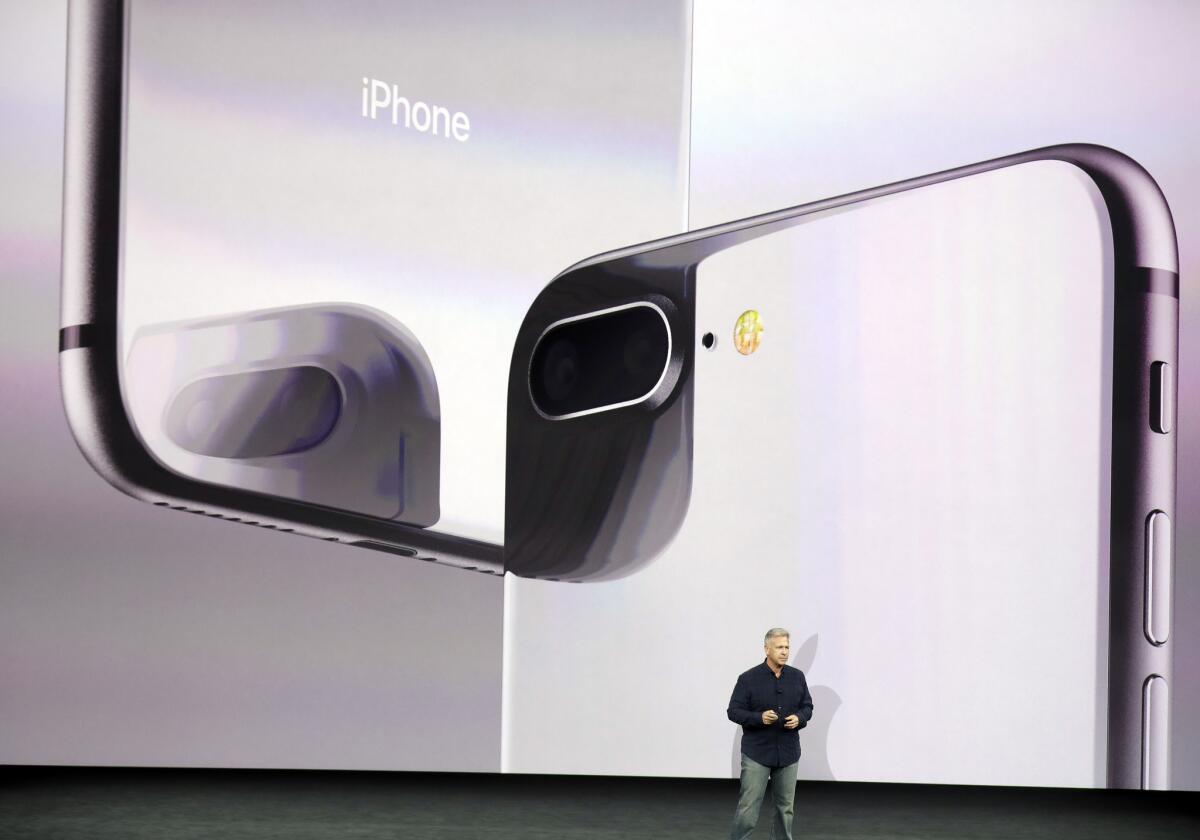
Here they are:
- 4.7-inch display for iPhone 8; 5.5-inch display for iPhone 8 Plus
- Glass surface on front and back
- Wireless charging using Qi standard (can be charged using third party wireless chargers that also use Qi)
- LTE Advance for faster network connections
- Water and dust resistant
- Powered by an A11 Bionic chip, two performance cores
- 12 mega-pixel camera with two new sensors and optical image stabilizers
- “Portrait Lighting” feature uses the iPhone 8 and 8 Plus’ dual cameras to sense depth and rework the lighting while you compose the shot
- Highest quality video ever in a smartphone
- Shoots video in 4K
- New gyroscopes and accelerometers for augmented reality
- Both models available in 64 GB and 256 GB
- iPhone 8 starts at $699, iPhone 8 Plus starts at $799
- Comes in silver, space gray, gold finishes
- Pre-order opens Sept. 15, available Sept. 22
- Share via
Apple TV gets 4K -- and HDR
Apple TV finally has 4K.
The company’s upgraded digital media player brings sharper picture quality, one that will bring a cinematic quality to home viewing, Apple CEO Tim Cook said.
“Each stage brought with it a more true-to-life experience, a more immersive experience,” Cook said of the evolution of TV content from black-and-white to color to HD. “Now we’re at the next major inflection point, one that has the most stunning visuals ever.”
4K brings four times as many pixels as HD, while HDR adds high dynamic range, so picture quality will be more enhanced and vibrant.
It is “the biggest Apple TV upgrade cycle the company has ever had,” analyst Patrick Moorhead said.
You can order the new Apple TV 4K starting Sept. 15, and it ships a week later. It costs $179.
- Share via
Apple Watch Series 3 doesn’t need an iPhone nearby. Here are the specs

The latest Apple Watch will be the first to cut the cord, so to speak, with the iPhone.
The Apple Watch Series 3 boasts built-in cellular, meaning users can make and receive calls from their wrists and use apps that rely on cellular data without having a smartphone close by. That’s a big boon for active people who want GPS tracking during runs, bike rides, swims or hikes without having to tote a phone.
It also means you can stream music on the go.
Here are the specs:
- Built-in cellular, with the screen doubling as an antenna
- Up to 18 hours of battery life
- Same size as previous versions.
- With cellular: $399 (no details on pricing for plans mentioned); $329 without cellular.
- Orders begin Sept. 15, shipping Sept. 22
- Share via
Remember when the Apple watch was about fashion and function? Now it’s for fitness and health
After launching as a watch intended to assist with productivity (and supposedly help you look stylish while doing so), Apple appears to be reframing its timepiece as a health and fitness gadget.
In a presentation focused mainly on health tracking and exercise apps (including a shout-out to snowboarders and live video of a stand-up paddle-boarder), Apple said its new operating system for wearables, to be released Sept. 19, will include:
- Enhancements to heart rate app so you can see your heart rate on the watch face
- The ability to see your resting heart rate and recovery heart rate
- Notifications when it detects an elevated heart rate and you don’t appear to be active
- Monitoring of heart rhythm, surfacing irregular rhythms
- Share via
Apple repositions its retail stores as lifestyle centers

Apple has long been lauded for its innovative approach to retail stores (hello, glass cubes and floating stairs). Now the company is repositioning those stores as lifestyle centers.
Shortly after Apple CEO Tim Cook took the stage, he brought out retail chief Angela Ahrendts — noteworthy because Apple has been criticized in the past for its lack of female speakers at such high-profile events — to share the changes coming to many of its stores.
Ahrendts said the company wants its stores to be forums for collaboration. Among the changes are in-store experiences to help people “go even further” with their Apple products, such as sessions for photography, music gaming and app development.
There will also be “genius groves” in larger stores; an image behind Ahrendts showed an Apple store with trees in the main customer service area.
- Share via
Apple event opens with a Steve Jobs remembrance
The Apple keynote is underway, beginning with a fond remembrance of the company’s late co-founder Steve Jobs.
The company’s chief executive, Tim Cook, also announced the opening of Apple Park, the company’s new campus.
- Share via
Take a look at Apple’s new ‘spaceship’ campus
Apple’s latest iPhone isn’t the only shiny new thing the company is showing off in Cupertino today. Reporters and photographers attending the product event at the Steve Jobs Theater are snapping pictures and taking videos of Apple’s new “spaceship” campus.
Here’s the scene:
Remember, to tune into the livestream, which starts at 10 a.m. PDT, you will need to use Safari as your web browser. If you can’t be bothered doing that, just join us here.
- Share via
Steve Wozniak praises Apple’s new campus
You can’t define beauty. It doesn’t have words. It doesn’t have numbers. You just kind of see it and you know it.
— Steve Wozniak, Apple co-founder
When fellow co-founder Steve Jobs pitched the campus to the Cupertino, Calif., City Council in 2011, he said he envisioned the round building would be “a little like a spaceship landed.”
- Share via
The new iPhone could make laptops obsolete
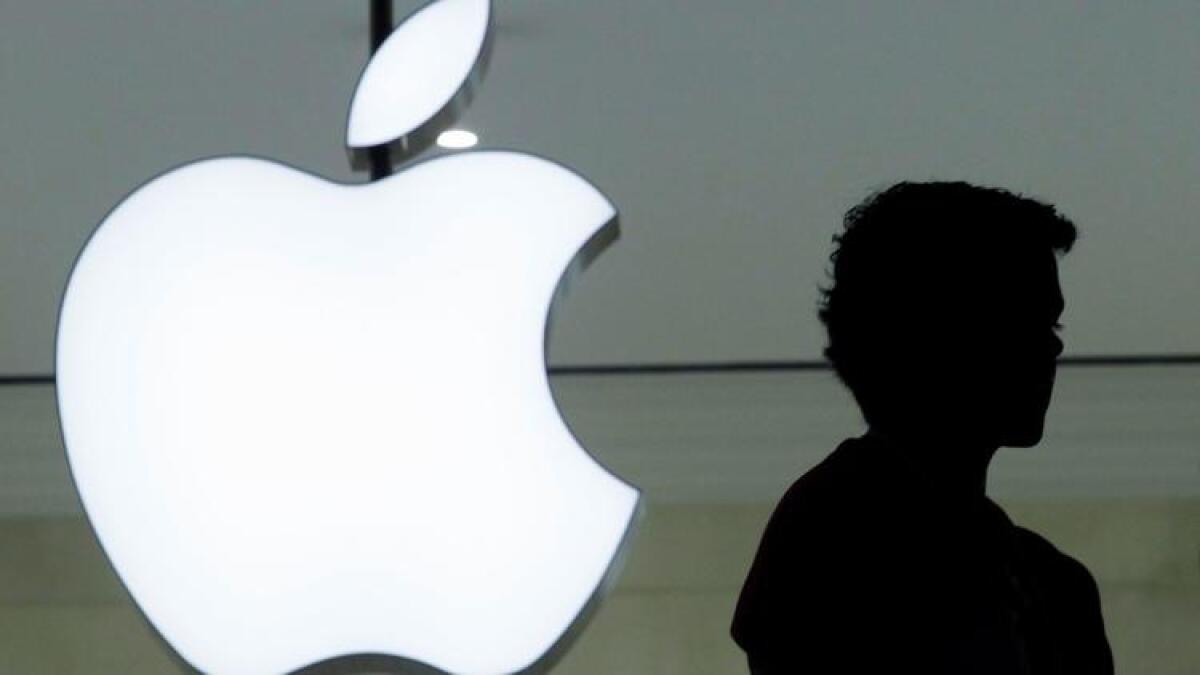
LaNada Peppers uses her Samsung Galaxy Note 5 for nearly everything.
As a journalist and communications manager, the 35-year-old relies on her smartphone to take photos, update social media, write stories, book interviews, capture video and send emails. When she needs to type fast, she connects a portable keyboard. If she needs to edit audio, an app does the job.
“Essentially, I live on this thing and don’t know what I would do without it,” she said.
Yet she still lugs around a laptop for things her phone can’t do as well: editing photos and video, and storing and backing up files.
That gap could close Tuesday when Samsung’s fierce rival Apple unveils its newest iPhone. After spending past iterations increasing the size of the phone, improving its screen, honing its camera and, as of last year, getting rid of the analog headphone jack, design leaks suggest that the new phone’s main selling point, aside from being sleeker and shinier than iPhones past, will be the breadth of its capabilities.
- Share via
Apple will announce its new iPhone from its ‘spaceship’ campus
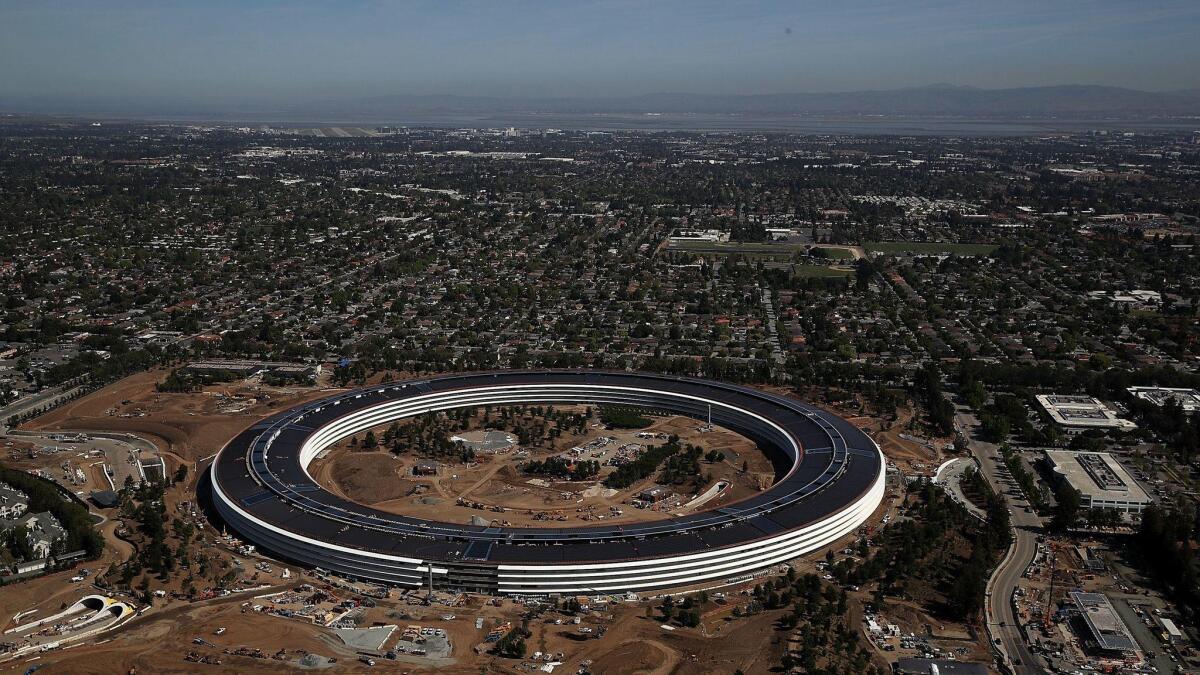
Apple will host its annual keynote event today at the Steve Jobs Theater at its futuristic new campus in Cupertino, Calif.
The event will be live streamed, beginning at 10 a.m. Pacific time. The stream will be viewable only through the Safari web browser.
The most valuable company in the world by market cap is expected to announce a new flagship smartphone, updates to the Apple Watch and AirPods, and a release date for iOS 11.
Join us here for the main news, and maybe some gifs.
- Share via
Apple’s new iPhone is rumored to cost about $1,000, more than a Macbook Air
Is a phone worth a mortgage payment? That’s what consumers may be asking themselves when Apple unveils its newest iPhone on Tuesday.
The latest iteration of one of America’s most indispensable products is expected to come in at a record price befitting a laptop. Analysts expect the entry-level 64-gigabyte handset to cost about $1,000, the 256-gigabyte version to cost about $1,100 and the top-of-the-line 512-gigabyte model to cost about $1,200.
That could make the iPhone 8 the most expensive mass market cellphone, ahead of the current priciest device, the recently released $950 SamsungGalaxyNote 8. It would also cost at least as much as an entry-level MacBook Air.